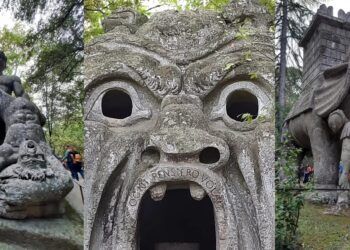San Gregorio da Sassola is a small town located in the Lazio region, in the province of Rome, Italy. It is located about 50 kilometers east of Rome, in the Monti Lucretili area, which is part of the Monti Simbruini. This position gives the hamlet a peaceful atmosphere and an excellent panoramic view of the surrounding countryside.
Its main features include traditional architecture, cobbled streets, historic buildings and a rural atmosphere. The village is known for its authenticity and rustic beauty, making it a charming place for a visit. Many of the buildings date back to the medieval and renaissance periods, giving the village a fascinating and suggestive atmosphere.
How to visit San Gregorio da Sassola?
- Means of transport: The easiest way to reach the village is by car, as it is located at a certain distance from Rome and you may have difficulty finding direct connections with public transport.
- Best time to visit: San Gregorio da Sassola can be visited throughout the year, but the best times are spring (April-May) and autumn (September-October). In these seasons, the climate is pleasant and temperatures are moderate, ideal for exploring the village and its surroundings.
- Attractions and Activities: In the hamlet itself, you can wander the cobbled streets, admire the historic architecture and enjoy the panoramic views. You may also find small artisan shops and restaurants offering traditional local dishes. Furthermore, the surrounding area is ideal for excursions and outdoor activities, such as trekking in the Lucretili Mountains.
- Lodging: While the hamlet itself may not have many lodging options, you may find lodgings nearby, such as farmhouses or small bed and breakfasts.
- Local Events: Check if there are any local events or festivals that may coincide with your visit. Attending traditional events can give you an even more authentic experience of the place.
Overall, San Gregorio da Sassola is an ideal place for those looking for a peaceful escape from the hustle and bustle of the city, wishing to explore authentic Italian culture and admire enchanting rural landscapes. Photo by Massimo Cioli from GoogleMaps.










Discussion about this post